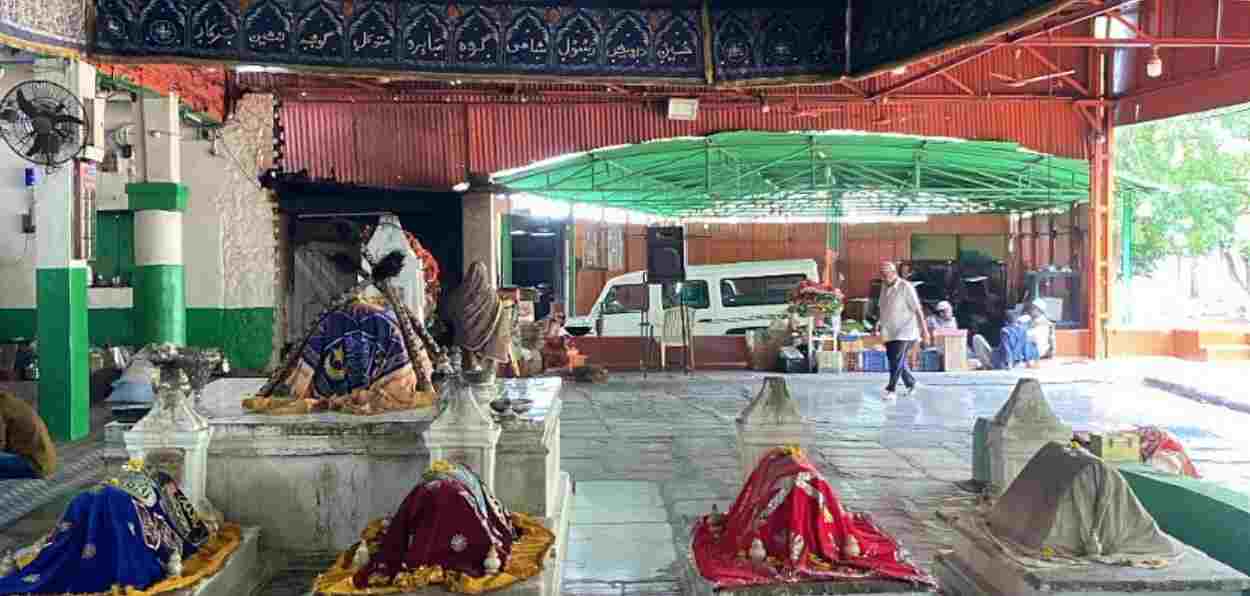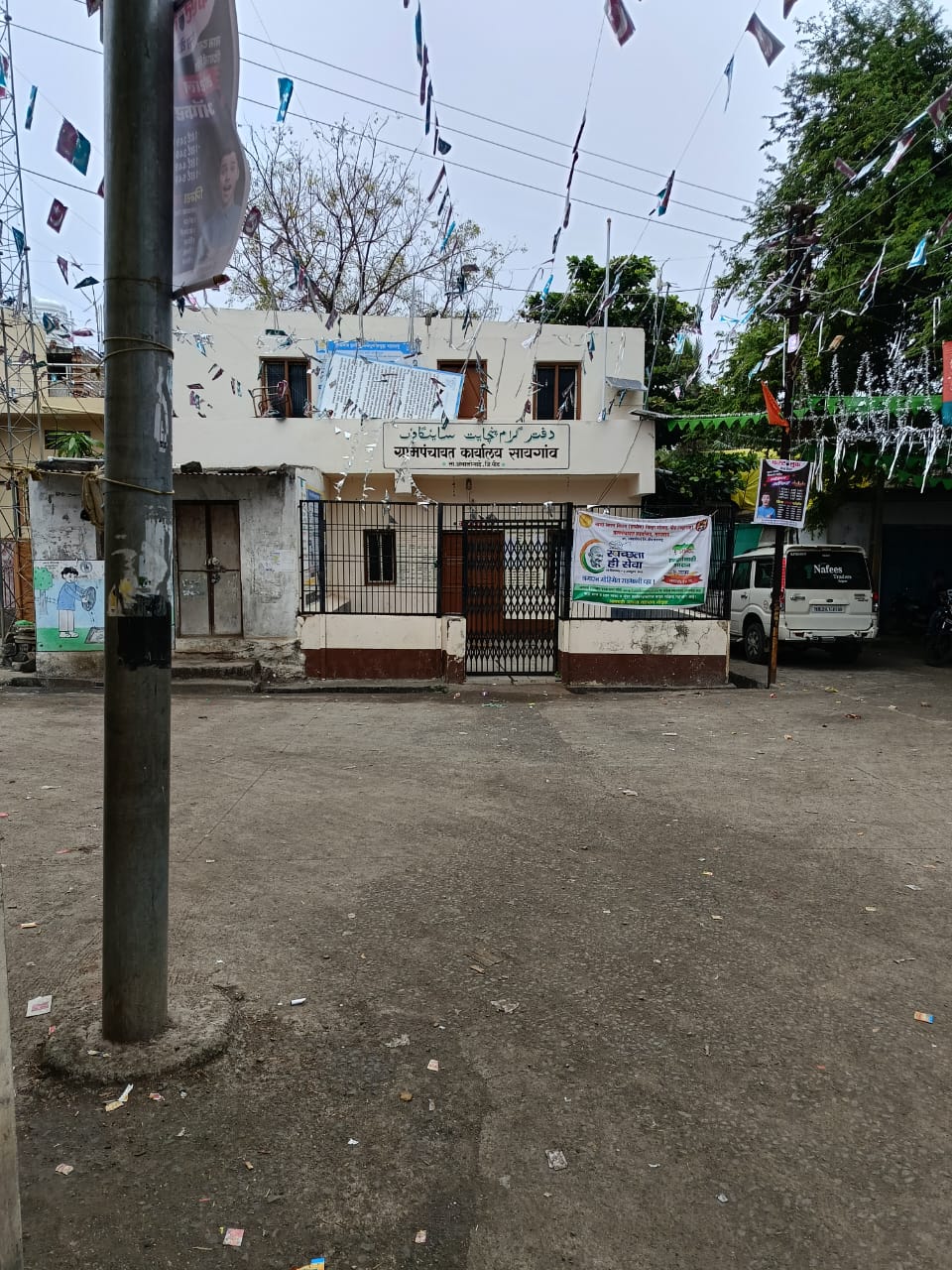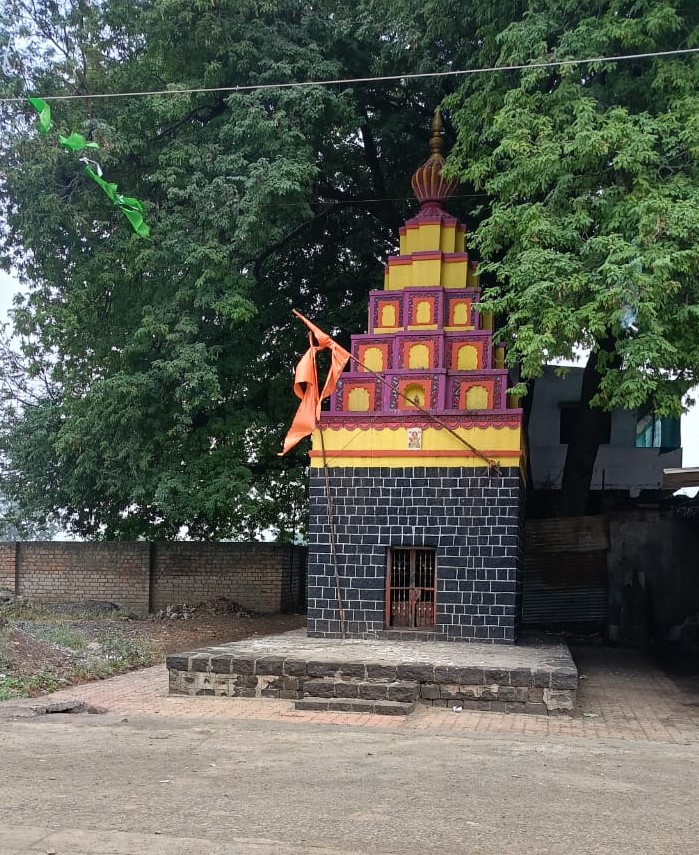
Kaleem Azeem/Pune
Saigaon is a Muslim-majority village in the Ambajogait taluka of Maharashtra. This village is eight kilometers south of Ambajogai and 35 kilometers east of Latur on the Latur-Aurangabad road. There are settlements on both sides of the road. But the main settlement is in the south of the village. There are hotels, restaurants, and various shops on both sides of the state highway. There is a lot of congestion on this road, there is traffic for several kilometers. The famous sugar factory of Ambajogai is just three kilometers away from the village.
Almost 75 percent people of the village with a population of around 5000 are Muslims and the rest are Hindus and Buddhist
The prosperity of the people can be gauged from the fact that most of the houses here are made of cement concrete. Villagers take pride in the peaceful environment and have no history of religious disputes.
The history of Saigaon, a symbol of Hindu-Muslim unity, is about 500 years old. The locals have a memory of the last 200 years.
The villagers proudly say that although some neighbouring villages have seen minor incidents of caste tensions and communal disputes in the last 10 years, Saigaon is always an exception.
Village sarpanch Kailash Maske says, “I am 35 years old. I was born in this village. I have never seen tension in the village in my life. What’s more, we never heard about any religious conflict or caste conflict in the village, even from our grandfather or parents.”
He says the implementation of 'Mahatma Gandhi Tantamukt Yojana' (Maharashtra Government's scheme to end village conflicts) has always been a priority.
Ghaus Hashmi, 70, who has retired from the post of education officer of Beed district, says, “I was born in this village. My father and grandfather also say that there was never any Hindu-Muslim dispute in the village. Ever since I regained consciousness, I have observed that an atmosphere of peace and tranquility prevails in the village. Most of the people here are farmers. Religious, ethnic, and social harmony is the specialty of this village. Most of the people here earn their livelihood through labor or farming. Every villager here is dependent on each other, so naturally there is a feeling of unity among them!”
 Panchayat office, Saigoan
Panchayat office, Saigoan
Dinesh Naval, 24, reacted when asked if there are any disputes in the village, “…No question at all! There was never any religious, or social conflict or controversy in the village. There is no possibility of anything like this happening in the future. Because we all get along well with each other..”
There are seven small and big mosques and a temple here. This Hanuman temple is very old. In 2010, the Muslims renovated it. The villagers proudly say that this temple was rebuilt by Muslims. Interestingly, this temple is right in front of the village's famous Dargah Hazrat Sadiq Ali Shah. Maratha and Dalit communities are minorities in the village.
Dhammanand Maske, a youth from this village, told us, “We have regular contact with the Muslim community in the village. I participate in all their festivals. I have many Muslim friends whose houses I visit, and I eat with them.”
Senior journalist Amar Habib says, “Hindu-Muslim hatred spreads quickly in rural areas. In villages where the Muslim population is less, there are more disputes, fights, and riots. However, 90 percent of the population in Sayagaon is Muslim. Therefore, there is no question of religious tension or dispute here.”
Syed Nazir Ijaz, 58, works as a clerk in the Gram Panchayat office. He says, “There is a colony of Dalits here. In this colony, the Muslims of the village have built a community temple for their Dalit brothers. The Dalit community here also lives together with the Muslims. Khadakpura village has a mixed settlement. Both communities live together there. The Dalits here also participate in all Muslim festivals. They also never feel unsafe here.”
The sugarcane from the village goes to the nearby Ambaskhar factory and the Rena factory, located at a distance of twenty minutes. Soybean is another major crop in the village.
Many people from Saigaon held senior positions in the government of Nizam and have settled in Hyderabad since that time.
After partition, the second largest migration occurred in the 1970s when a severe drought hit the region.
In the 1990s, many locals went out of the country for work and their remittances changed the economy of this village. As a result, agricultural and real estate prices skyrocketed.
Nawaz Khan, 42, who shifted to Mumbai in 2008 says, “Even after the drought in the 70s, migration of village people continued. But these people took care of the village and the villagers and contributed to its development. The villagers brought relatives and friends to Mumbai and gradually this village became the gateway to the Gulf countries.”
Sayagaon was known as 'Mini Gulf'. Most of the people here started settling in the Gulf countries. After coming to Mumbai, he came to know that he could work abroad and earn good money. In 1975-78, three families from the village went to Kuwait, Dubai and Saudi Arabia. Nawaz says, “He found labor and driving work there. Then he slowly took his relatives there. After this, gradually the people of the village started going abroad. By 1980, many people from here settled in Gulf countries.”
 Hanuman Mandir of Saigoan which was built by Muslims
Hanuman Mandir of Saigoan which was built by Muslims
Haji Khan of the village worked for 25 years in Kuwait and other Gulf countries. When he returned to the village, he helped many poor villagers and small landowners to go to Gulf countries for jobs. He charged them a nominal fee. This led to the rush of villagers to the Gulf countries, he says.
Haji Khan and Nisar Ahmed Khan worked as agents in Mumbai and thanks to them today more than 100 people of this village are in Gulf countries.
The younger generation are engineers and doctors and yet the migration of people for work continues. Some villagers of Sayagaon are even working in Europe.
Nawaz says with the arrival of foreign currency, 30-40 percent families were able to achieve prosperity.
Amar Habib says, “Saigaon is an example of ‘personal development through migration’.
At one time this village was famous for transporters. “This private transport system employed many people and provided convenience to the people of Ambajogai and Latur.”
From 1997 to 2010, most people in the village were in the transportation business; they owned luxury buses. However, today the trend has shifted to the real estate business. Another group is in the hotel industry.
Since the village is on the Ambajogai-Latur highway, the villagers own several hotels and lodges on it. Ambajogai also has a good number of hospitals owned by locals. There is no government hospital in the village.
There are two Zilla Parishad schools in the village. According to Nawaz Khan, “The first school of the village was built in 1883. It’s constructed in the European style.”
Ghaus Hashmi says, “In 1968, an Urdu medium secondary school was established in the village. Later Marathi medium also came into it. I am a student of the same school. I have also worked there. I was its principal for three years.”
Two Zilla Parishad schools in the village have Urdu-Marathi medium. One of the schools is for girls.
Ghaus Hashmi says, “As money started pouring in the villagers sent their children to the English-medium schools. There are one or two pre-primary English medium schools in the village. Apart from this, every day two or three buses go to a reputed English school in Ambajoga. The percentage of villages in higher education and vocational education has also increased.”
Today, most of the students of the village are choosing medical, engineering, and IT fields. After their studies, he worked in Pune, Mumbai and Hyderabad. The literacy rate of the village is up to 76 percent.
Today more than 50 people in the village are working as teachers in government. Many of them are doing training work in Mumbai.
Ghaus Hashmi also believes that job transfer has played an important role in the development of the village. One of his sons is a computer engineer in Gulf countries. He sends half of his salary of lakhs to the village..”
There is another specialty of Saigao. Here even non-Muslims speak fluent Urdu. Nazir Ijaz told us, “When you talk to non-Muslims, you do not even realize that their mother tongue is not Urdu but Marathi. His words, accent, and pronunciation are pure Urdu and Deccani.”
The locals are good in the language because, during the Nizam period, the medium of education here was Urdu. It was several years later that a Marathi language school opened here.
In 2022, the post of Sarpanch for the village was reserved for Scheduled Castes. In the elections held in December 2022, Kailash Maske was elected Sarpanch. Before that, this post was held by Muslims.
Rafiq Qureshi, Deputy Sarpanch of the village, is from the OBC community.
Election time sees every candidate flocking to the village not because they want to woo Muslims but to visit the Dargah of Hazrat Sadiq Ali Shah. It’s almost a political ritual for leaders in Maharashtra to seek blessings at this Sayagaon dargah.
Former Chief Minister Vilasrao Deshmukh often visited Saigaon. He had friendly relations with Akhtar Ali, the current Murshad (servant) of the Dargah.
Nawaz Khan says, “It is said that after the rebellion of 1857, a young man from a Mughal family came wandering to our village. he was alone. He would eat whatever was given to him. Even if it is not available, he survived on plants. Once he went missing and soon the locals realized that he was an extraordinary person, began to understand esotericism and mysticism, and took care of them. Later he came to be known as Hazrat Sadiq Ali Shah.”
The death anniversary of Hazrat Sadiq Ali Shah is celebrated every year on his urs which locals call village ki yatra i.e. village festival, in which everyone participates.
Dinesh Naval, 24, says, “During Urs, people who have gone to Mumbai, Pune, and other places for jobs come back to their villages. There is a festive atmosphere in the village on the day of Urs. There is a lot of buying and selling in the village. Then many veterans also come to the village. This festival continues for eight days. The beauty of the village is worth seeing during these eight days.”
Jamshed Ali says, “At that time there were lakhs of people in the village. Many people also come from other places. This festival lasts for eight days. Camels are specially brought from Rajasthan for Urs. A procession is taken out on this ocasiuon. Different rituals are performed for four days. Qawwali is organized for the next four days, in which eminent Qawwals from across the country are invited.”
Nawaz Khan says, “Once upon a time, Qawwali of Urs of Saigaon was famous in entire Marathwada. Here famous and expensive singers are called and honored. People listen to him with great interest. To listen to special qawwali
ALSO READ: Bhadeja's lucrative Papaya cultivation has triggered return of job-seekers from cities
People come from different places. “People from outside also come here to listen to the special Qawwali and stay here for four days.”
